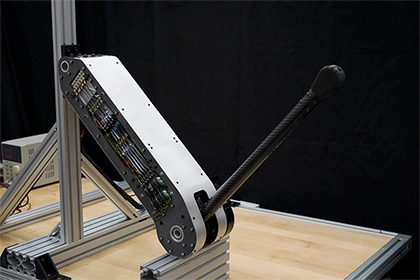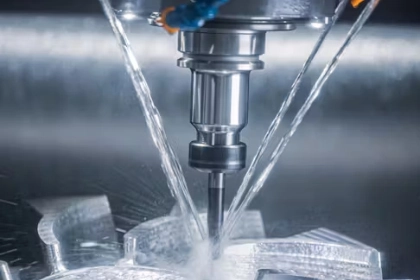-
The motor cannot rotate after power is supplied, but there is no abnormal sound, odor or smoke.
cause of issue:
- The power supply is not connected (at least two phases are not connected);
- The fuse is blown (at least two phases are blown);
- The overcurrent relay is adjusted too small;
- The control equipment wiring is wrong.
troubleshooting:
- Check the power circuit switch, fuse, and junction box for breakpoints and repair them;
- Check the fuse model and the reason for the fuse, and replace it with a new one;
- Adjust the relay setting value to match the motor;
- Correct the wiring.
-
The motor does not rotate after power is supplied, and then the fuse blows
pcause of issue:
- One phase of power supply is missing, or one phase of the fixed main coil is connected;
- The stator windings are short-circuited between phases;
- The stator winding is grounded;
- The stator winding wiring is wrong;
- The fuse cross-section is too small;
- The power cord is short-circuited or grounded.
ptroubleshooting:
- Check whether one phase of the knife switch is not closed properly, but one phase of the power circuit is disconnected; eliminate the reverse connection fault;
- Find the short circuit point and repair it;
- Eliminate grounding;
- If a misconnection is detected, correct it;
- Replace the fuse;
- Eliminate the grounding point.
-
The motor does not rotate and makes a buzzing sound after power is supplied.
pcause of issue:
- The stator and rotor windings are open circuited (one phase is disconnected) or one phase of the power supply is out of power;
- The start and end of the winding lead wire are connected incorrectly or the internal connections of the winding are reversed;
- The contacts of the power circuit are loose and the contact resistance is high;
- The motor load is too large or the rotor is stuck;
- The power supply voltage is too low;
- The assembly of the small motor is too tight or the grease in the bearing is too hard;
- The bearing is stuck.
ptroubleshooting:
- Identify breakpoints and fix them;
- Check the winding polarity; determine whether the winding ends are correct;
- Tighten the loose wiring screws, use a multimeter to determine whether each joint is falsely connected, and repair it;
- Reduce load or detect and eliminate mechanical faults;
- Check if the specified surface connection method is mistakenly connected to Y; if the voltage drop is too large due to the power wire being too thin, correct it.
- Reassemble to make it flexible; replace qualified grease;
- Repair the bearing.
-
It is difficult to start the motor. At rated load, the motor speed is much lower than the rated speed.
pcause of issue:
- The power supply voltage is too low;
- The surface connection method motor is mistakenly connected to Y;
- The cage rotor is welded or broken;
- The local coils of the stator and rotor are connected incorrectly or reversely;
- Increase the number of turns too much when repairing the motor winding;
- The motor is overloaded.
ptroubleshooting:
- Measure the power supply voltage and try to improve it;
- Correct the connection method;
- Check open welding and breakpoints and repair them;
- Detect misconnections and correct them;
- Restore the correct number of turns;
- Load reduction.
-
The no-load current of the motor is unbalanced and the three-phase phase difference is large.
pcause of issue:
- When rewinding, the number of turns of the three-phase winding of the stator is not equal;
- The first and last ends of the winding are connected incorrectly;
- Unbalanced power supply voltage;
- The winding has faults such as inter-turn short circuit and coil reverse connection.
ptroubleshooting:
- Rewind the stator winding;
- Check and correct;
- Measure the power supply voltage and try to eliminate the imbalance;
- Eliminate winding faults.
-
When the motor is no-load or overloaded, the ammeter pointer is unstable and swings.
pcause of issue:
- The cage rotor guide bars are open or broken;
- The wound rotor is faulty (one phase is open) or the brushes and slip ring short-circuit devices have poor contact.
ptroubleshooting:
- Detect broken bars and repair or replace the rotor
- Check the rotor circuit and repair it.
-
The no-load current of the motor is balanced, but the value is large
pcause of issue:
- During repair, the number of turns of the stator winding is reduced too much;
- The power supply voltage is too high;
- The Y connection to the motor is mistakenly connected to Δ;
- During motor assembly, the rotor is installed backwards, causing the stator core to be misaligned and the effective length to be shortened;
- The air gap is too large or uneven;
- When dismantling old windings for overhaul, improper hot removal method is used, causing the iron core to be burned.
ptroubleshooting:
- Rewind the stator winding to restore the correct number of turns;
- Try to restore the rated voltage;
- Change to Y;
- Reassembly;
- Replace the rotor with a new one or adjust the air gap;
- Inspect the iron core or recalculate the winding and increase the number of turns appropriately.
-
The motor makes abnormal noises when running. There are abnormal noises.
pcause of issue:
- The rotor rubs against the stator insulation paper or slot wedge;
- Bearing wear or foreign matter such as sand in the oil;
- The stator and rotor cores are loose;
- The bearing is short of oil;
- Air duct filling or fan wiping cover;
- The stator and rotor cores rub against each other;
- The power supply voltage is too high or unbalanced;
- The stator winding is misconnected or short-circuited.
ptroubleshooting:
- Trim the insulation and lower the groove wedge;
- Replace the bearings or clean the bearings;
- Inspect stator and rotor cores;
- refuel
- Clean the air duct; reinstall the device;
- Eliminate scratches, and if necessary, remove the small rotor in the car;
- Check and adjust the power supply voltage;
- Eliminate stator winding faults.
-
The motor vibrates greatly during operation
pcause of issue:
- The bearing clearance is too large due to wear;
- The air gap is uneven;
- The rotor is unbalanced;
- The rotating shaft is bent;
- The iron core is deformed or loose;
- The center of the coupling (pulley) is not corrected;
- The fan is unbalanced;
- The chassis or foundation is not p enough;
- The motor anchor screws are loose;
- The cage rotor is open and disconnected; the wound rotor is open; and the stator winding is faulty.
ptroubleshooting:
- Inspect the bearings and replace them if necessary;
- Adjust the air gap to make it uniform;
- Correct rotor dynamic balance;
- Straighten the rotating shaft;
- Correction of overlapping cores
- Recalibrate to make it comply with regulations;
- Inspect the fan, correct the balance, and correct its geometric shape;
- Reinforcement;
- Tighten the anchor screws;
- Repair the rotor winding and repair the stator winding.
-
Bearing overheating
pcause of issue:
- Too much or too little grease;
- The oil is of poor quality and contains impurities;
- Improper cooperation between the bearing and the journal or end cover (too loose or too tight);
- The inner hole of the bearing is eccentric and rubs against the shaft;
- The motor end cover or bearing cover is not installed flatly;
- The coupling between the motor and the load is not corrected, or the belt is too tight;
- The bearing clearance is too large or too small;
- The motor shaft is bent.
ptroubleshooting:
- Add grease as required (1/3-2/3 of the volume);
- Replace with clean grease;
- If it is too loose, it can be repaired with adhesive. If it is too tight, it should be turned on and the inner hole of the journal or end cover should be ground to make it suitable;
- Repair the bearing cap to eliminate friction spots;
- Reassembly;
- Recalibrate and adjust the belt tension;
- Replace with new bearings;
- Correct the motor shaft or replace the rotor.
-
The motor overheats or even smokes
pcause of issue:
- The power supply voltage is too high, which greatly increases the heating of the iron core;
- The power supply voltage is too low, the motor is running with rated load, and the current is too high, causing the windings to heat up;
- When repairing and dismantling the winding, improper hot removal method is used, which may burn the iron core;
- The stator and rotor cores rub against each other;
- The motor is overloaded or starts frequently;
- Broken cage rotor bars;
- The motor is missing a phase and runs on two phases;
- After rewinding, the winding is not fully impregnated with paint;
- The ambient temperature is high, there is a lot of dirt on the surface of the motor, or the ventilation duct is blocked;
- Motor fan failure, poor ventilation; stator winding failure (short circuit between phases and turns; incorrect internal connection of the stator winding).
ptroubleshooting:
- Reduce the power supply voltage (such as adjusting the tap of the power supply transformer). If it is caused by incorrect connection of motor Y and Δ, the connection should be corrected;
- Increase the power supply voltage or replace the thick power supply wire;
- Inspect the iron core and troubleshoot;
- Eliminate friction points (adjust the air gap or set the rotor);
- Load reduction; control starting according to specified times;
- Check and eliminate rotor winding faults;
- Restore three-phase operation;
- Adopt secondary dipping and vacuum dipping processes;
- Clean the motor, improve the ambient temperature, and adopt cooling measures;
- Check and repair the fan, replace if necessary; inspect the stator winding to eliminate faults.

 2024-08-30 16:01:40
Engineering
2024-08-30 16:01:40
Engineering
 2024-07-26 14:09:13
Engineering
2024-07-26 14:09:13
Engineering
 2024-07-18 09:42:00
Engineering
2024-07-18 09:42:00
Engineering